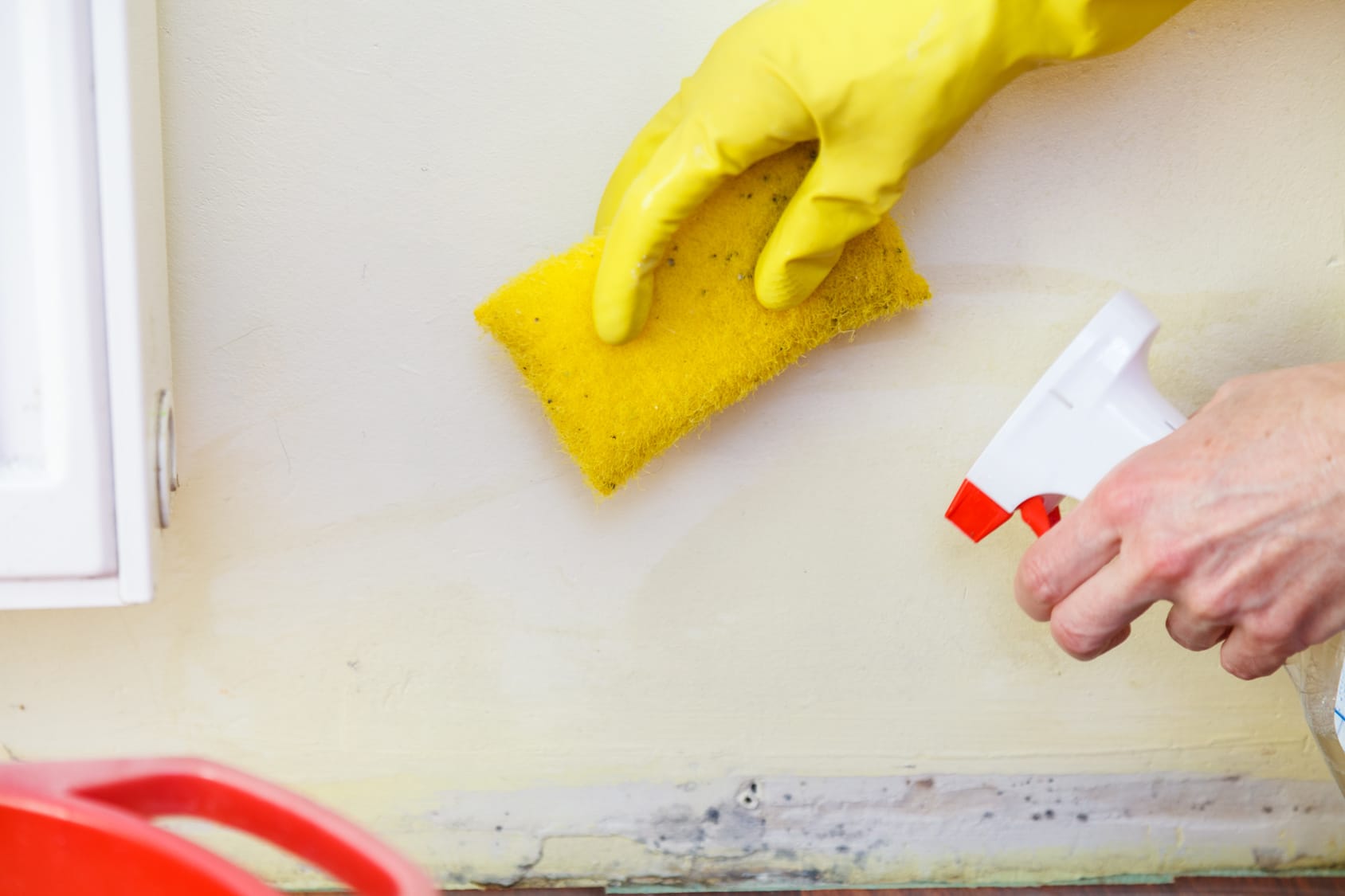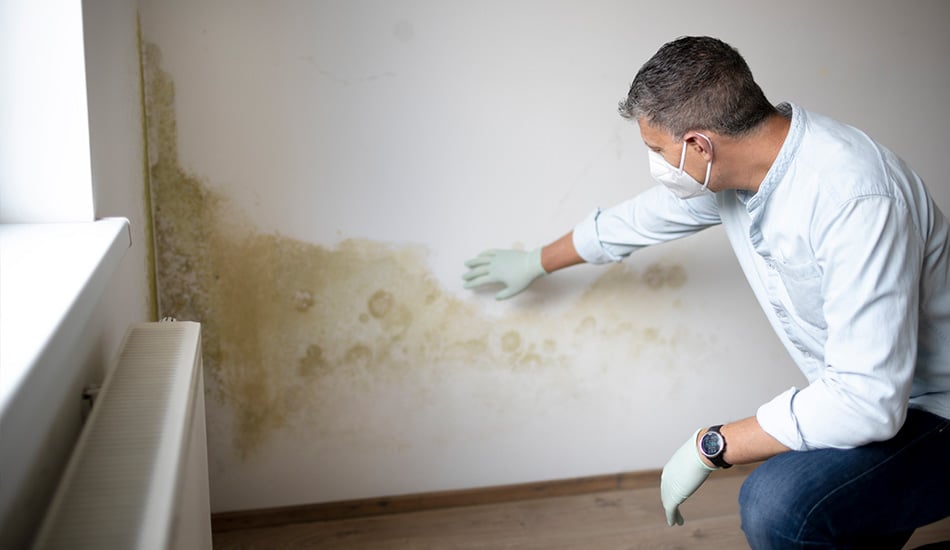Professional Tips for Message Mold Remediation Success
In the realm of mold remediation, effectively eradicating mold is only half the fight; the true challenge exists in stopping its reappearance. By sticking to experienced suggestions and best practices, individuals can protect their rooms versus mold renewal and preserve a healthy indoor setting.
Display Moisture Levels Regularly
Regular monitoring of humidity levels is essential in making sure the performance of post mold removal initiatives. After completing mold and mildew removal procedures, preserving optimal moisture degrees is vital to avoid mold and mildew re-growth and guarantee a healthy and balanced interior atmosphere. Monitoring moisture levels enables early discovery of any kind of spikes or changes that can potentially lead to mold and mildew resurgence. High moisture levels over 60% produce a conducive setting for mold and mildew to flourish, making normal checking an aggressive measure to avoid any type of future mold problems - Post Mold Remediation.
Furthermore, developing a regular schedule for moisture checks, specifically in high-risk areas such as cooking areas, restrooms, and cellars, is an aggressive technique to mold avoidance. By consistently keeping track of humidity degrees, home owners can efficiently mitigate the danger of mold and mildew reoccurrence and keep a healthy interior setting post-remediation.
Conduct Thorough Inspections Post-Remediation
Following the conclusion of mold remediation treatments, it is critical to carry out thorough examinations to verify the performance of the remediation process. These post-remediation assessments are vital in making sure that the mold and mildew problem has actually been efficiently resolved which there is no reoccurrence or remaining mold and mildew development. Assessments ought to be lugged out by qualified specialists that have expertise in recognizing mold and mildew and assessing indoor air quality.
During these evaluations, different techniques such as aesthetic evaluations, air tasting, and surface tasting might be employed to completely review the remediated areas. Aesthetic analyses entail a comprehensive assessment of the premises to examine for any visible indications of mold and mildew development or water damage. Air tasting helps in identifying the airborne mold spore degrees, while surface area tasting can find mold particles on surface areas.
Implement Proper Air Flow Methods
After guaranteeing the efficiency of the mold removal process via comprehensive examinations, the next critical action is to concentrate on applying correct ventilation methods. Appropriate ventilation is necessary in protecting against mold reoccurrence by managing moisture levels and promoting air blood circulation. To accomplish this, it is suggested to make use of exhaust followers in locations susceptible to high moisture, such as bathrooms and cooking areas. Additionally, opening up doors and home windows when weather permits can aid improve airflow and decrease dampness buildup. Air cleansers and dehumidifiers are additionally important devices in keeping optimal interior air top quality.
Proper ventilation not just help in avoiding mold growth but likewise contributes to the overall health and convenience of residents. By making sure sufficient ventilation throughout the home, you can decrease the danger of mold and mildew regrowth and produce a much healthier living setting. Normal maintenance of ventilation systems, consisting of cleansing and filter replacements, is vital to sustaining efficient air flow. Consulting with cooling and heating specialists can offer more insights right into enhancing air flow strategies for your particular home needs.

Usage Mold-Resistant Materials for Repairs
To boost the long-term efficiency of mold and mildew removal efforts, incorporating mold-resistant materials for fixings is critical browse around this site in reducing the risk of future mold growth. Mold-resistant materials are designed to endure moisture and prevent mold and mildew growth, making them a necessary choice for locations prone to wetness and moisture. When repairing locations impacted by mold, utilizing materials such as mold-resistant drywall, mold-resistant paints, and mold-resistant caulking can help avoid mold reoccurrence.
Mold-resistant drywall is an outstanding alternative to typical drywall in areas like bathrooms and basements where dampness degrees are greater. When subjected to damp conditions, this kind of drywall has a special coating that withstands mold development also. Furthermore, using mold-resistant paints consisting of antimicrobial agents can additionally prevent mold and mildew advancement on ceilings and walls.
In areas where moisture prevails, such as kitchens and restrooms, making use of mold-resistant caulking around tubs, sinks, and home windows can aid secure out water and avoid mold and mildew from holding in fractures and gaps. By investing in these mold-resistant materials throughout repair work post-remediation, you can considerably minimize the likelihood of future mold concerns and preserve a much healthier indoor environment.
Maintain Cleanliness and Address Water Issues
Guaranteeing cleanliness and immediately attending to water issues are essential techniques to maintain in guarding interior rooms from mold reinfestation. After mold and mildew removal, it is important to maintain a clean atmosphere to stop the regrowth of mold and mildew (Post Mold Remediation Report). Regular cleansing, dusting, and vacuuming can assist get rid of any type of sticking around mold and mildew spores and prevent them from resolving and multiplying. In addition, keeping interior spaces completely dry and dealing with any water concerns without delay is crucial in mold avoidance. Leaks, water invasion, or high moisture levels can produce the best breeding place for mold and mildew, so it is vital to deal with any type of water-related problems important link instantly.
To preserve sanitation, consider using HEPA filters in vacuum cleaners and air cleansers to catch mold spores and stop their flow airborne. Moreover, ensuring proper ventilation in areas prone to moisture buildup, such as cooking areas and restrooms, can aid keep humidity levels in check. By remaining vigilant about sanitation and dealing with water issues without delay, you can successfully protect against mold reinfestation and maintain a healthy and balanced indoor setting.
Final Thought

In the world of mold remediation, effectively eradicating mold is just half the fight; the true obstacle lies in avoiding its reappearance. After finishing mold and mildew remediation procedures, keeping optimum moisture degrees is important to protect against mold and mildew re-growth and guarantee a healthy and balanced interior environment. High humidity levels over 60% develop a conducive environment for mold to flourish, making routine checking a proactive procedure to protect against any future mold concerns.
To enhance the long-lasting performance of mold and mildew remediation initiatives, including mold-resistant materials for repair work is crucial in mitigating the risk of future mold and mildew growth. After mold and mildew remediation, it is critical to maintain a tidy atmosphere to prevent the regrowth of mold and mildew.